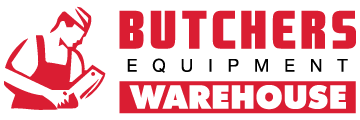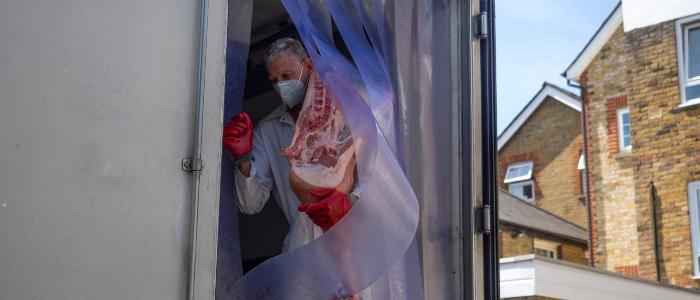How to protect your deliveries from Covid-19 in 5 simple steps
The coronavirus crisis has had a hugely dramatic effect on every industry, but the food sector has been perhaps one of the most heavily affected. Apart from human contact, food arguably poses one of the highest risks of direct transmission of the virus, so our industry has to manage this enormous weight of responsibility in addition to the universal challenges of simply staying in business.
Butchers all over the UK (and indeed the world) are now faced with the challenge of how to protect their staff and customers from the risk of Covid-19. And while many have taken the obvious steps by putting up screens and implementing social distancing in their stores with a one in, one out policy, it’s equally important to consider the danger that regular deliveries can present, too.
Today, it’s vital to reassess the risks involved in bringing food into your premises, identify potential risks of infection, and take steps to minimise danger. We’ve taken guidance from international food service giant Araven to outline 5 of the most critical steps you can take to protect the produce, property, and most importantly the people in your business.
1. A specific zone must be designate for receiving deliveries
To maximise your control over what comes into your premises, and how, it’s best to assign a specific area for taking deliveries. This must be clearly marked so that it’s equally recognisable for new visitors as it is for regular couriers to your property (for example, a chalked area of floor, a or a specific table or surface). It should also be set as far away from your normal operations as possible, preferably on the further outskirts of your property. Make sure that your suppliers know that delivery notes should also be left on this surface, not carried any further into your premises.
2. Carefully remove and dispose of the outer packaging
By outer packaging, we mean the very outermost layers like cardboard and hard plastic - all of which naturally have maximum chance of coming into contact with an infected surface or person. Ideally, you should get rid of these in outside waste disposal areas, and avoid carrying them into your premises. Any packaging that you can’t immediately remove from the food - such as cling film or other types of protective plastic - must be thoroughly disinfected.

3. Keep track of who’s using what
Any bits of clothing or equipment that your employees need should always be preferably used by the same person, spanning from the obvious stuff (like chainmail gloves and PPE) all the way down to more unobtrusive items (such as pens or notebooks). If any of these items are shared, or otherwise passed from person to person, they need to undergo regular cleaning and disinfecting to minimise the chance of transmission on your premises. All physical contact between your staff and external couriers or suppliers should be avoided if at all possible.
4. Initiate regular deep cleans
After every delivery has been completed, all surfaces and items must be disinfected. The delivery zone itself should be cleaned and disinfected, and staff must wash their hands with a disinfectant soap and water. Before any of the new deliveries are moved to your own containers, you’ll need to ensure that they’re completely disinfected. It’s wise to have specific procedures in place to ensure that this has been done, such as sign-off by a senior supervisor or dedicated member of staff.

5. Maintain detailed inspections of all deliveries
All these additional measures shouldn’t be implemented at the cost of any existing safety and quality control procedures. You’ll still need to ensure that all containers and packaging is intact and that any food coming into your premises has been stored and transported at the right temperature. Similarly, double check the food labelling and shelf life of the products in question. Once you’re satisfied that everything is in order and that you have done everything you can to eliminate the risk of the virus making it onto your property, then you can begin the process of moving it into your own storage facilities.
Naturally, it’s wise to have a supplier control plan already in place to give you peace of mind over product quality. Araven’s original guide details a number of helpful extra steps you can take in how to handle and store meat and other produce once it’s on your premises, too. It’s worth noting that this is not necessarily an exhaustive guide of all the actions you can take, but outlines the bare minimum measures you should implement to protect your staff and customers. You can make any further measures at your own discretion!
As for us, we’re still your one-stop shop for all the butchery equipment you could ever need, from butchers knives and cleavers all the way up to meat mincers and bandsaws. Why not take a look around and see what we’ve got in stock? If you’re looking for something specific, you can always give us a ring on 01254 427761, and we’ll be only too happy to help!




